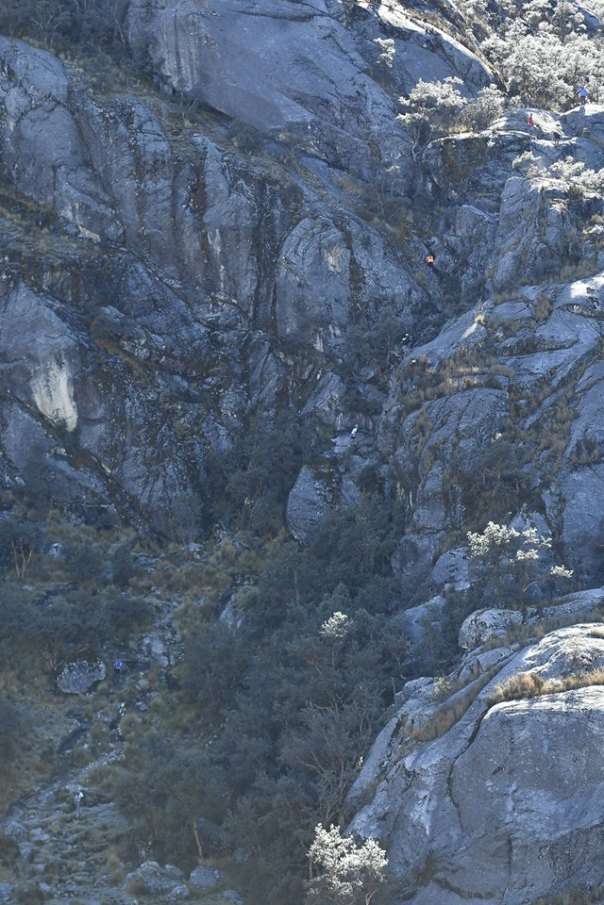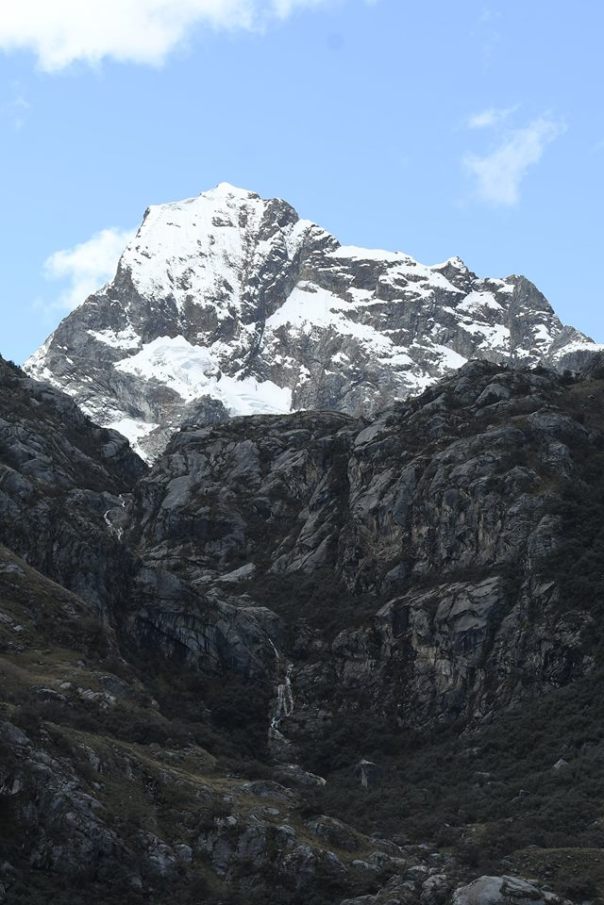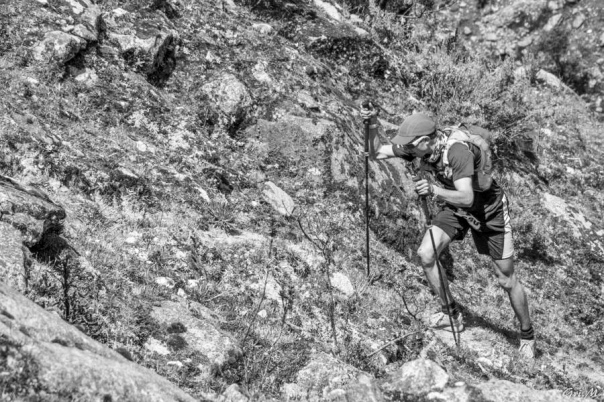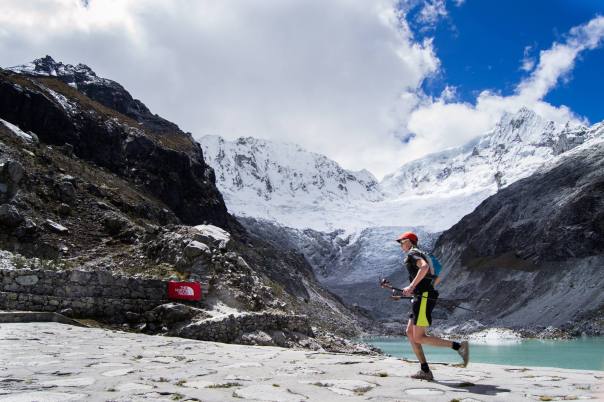The drying hills, dustier by the day, have a way of soaking up the passage of time, of soaking up just about everything. Except maybe the nightly fireworks, and the sky. The whole month of August swept under my feet so quickly I have had little time to contemplate what it meant.
I have spent a lot of time sitting on a chair at work, running errands, cooking, sleeping (maybe not enough), staring at a screen (definitely too much). This monotonous routine – what we call the “necessities” of life – provides moments to learn from, moments that allow me to better appreciate what it is that I love to do. Like being sick (writhing to the rhythm of gut cramps, spending all day on a toilet, or shaking with the heat of a raging fever) sitting on a chair staring at a screen makes me sure it’s not what I want to be doing, and sure of the joy that I get from pushing my body, being on the trail, in the mountains, between pines and peaks.
This past month has been one of some of the biggest physical objectives, the most ambitious outdoor projects that I’ve yet undertaken. Hopefully it’s just the beginning.
A project:
In my thirst, like the dry mountains, to soak up everything while I am privileged enough to be here, I’ve been on a constant look out for routes through high places that challenge my physical, mental, and emotional limits. The moments that I crave while sitting on that chair, looking at that screen. I’ve already done a few spectacular longer routes (such as Salkantay and Lares), but it’s not a bucket list. I hate the cliché. It’s not a list at all. It’s breathing in the mountains, covering myself in the endless sky.
The project came to be via a friend, Andres, whose idea it was to run the iconic out-and-back route to the ruins of Choquequirao. (Lonely Planet just deemed Machu Picchu’s sister city as the number one destination to visit in Peru.) The route is about 60km (57km as it turned out) and usually takes fit hikers 3 to 4 days to complete. On 4 August, we donned our minimalist vests and running shoes and set out to benchmark a Fastest Known Time (or FKT) on the route. Starting from the village of Cachora, the trail starts on a high plateau before plummeting down more than 1500m to the floor of a churning river. I can only guess that water was responsible for this, that as you look down from the upper trail, down below the diving stone walls and ancient trails scraped into their sides in an endless Z pattern, down to the white thread below, carving and sweeping through the immense grey-orange canyon – that water and tectonics were responsible.
The thing about moving through this terrain at all, and especially “fast,” is that it can be immensely rewarding, infinitely beautiful. I use the iceberg analogy to explain this: the experience of a one-time event can be the the spectacular tip of an iceberg, but below the surface, to be able to enjoy it, there is a gargantuan time- and energy-commitment, months of sweating it out daily for hours on end. If you are not prepared, it can be quite “unfun,” even dangerous.
It had been some time since I had felt so good moving through nature, through the mountains. Full of raw euphoria. Not a forced emotion, not a thought-out or rational process that comes like a “oh, I should appreciate this because it’s special, few people get to see it.” Instead there was a smile, a hoot just bubbling beneath my lips. I did some whooping and shouting especially on the descents.
After hitting the river, the stifling heat and bugs, you go back up the other side. It’s equally as steep and the going is slow, but we stayed steady, looking across the canyon behind us to sheer cliffs, a zig-zagging trail and into the grey sky. We made it to the gate of the ruins, stretched, ate, and turned around. Then it was 8km of tight steep dusty switchbacks down to the river, where the humidity and bugs kept us moving across the bridge and back up the other side. From this point on, we passed a fairly steady stream of donkeys, guides, and bewildered hikers with their huge packs. After pushing to run the last 12k of rolling dirt road, we finally made it back to Cachora, setting a “fast time” of 9h 36m. Being able to feel so good, enjoy the movement of my body, the scenery, even the monotony was a huge privilege. Neither Andres nor I are under any illusions of course: this record could have 2 hours taken off of it by a pro, and can certainly be lowered by other dedicated runners. And it will be, and I can’t wait to see that!
A race:
On 26 August I lined up with 75 other people in the small mountain village of Lares in the cold morning. After having tossed and turned under the glow of fluorescent lights, the pounding and tinny huayno music and the shouts and laughs of drunken locals all night, I arose at 5am to check in and line up.
Only three weeks later and the memories seem to have faded into the jagged peaks. I can see the bushes, cut with orange flagging across the side of the first climb, a mountain reaching to a panoramic plateau. Fighting through this section, branches whipping my face, cutting my lenses, I tailed the 5th place runner until it really kicked up and I was able to pass him. Hiking and scrambling up to a second plateau, shuffling through high mountain hamlets where leather-skinned campesinos cheered, clapping their slow hands, calling their shepherd dogs out from behind adobe walls.
I picked off 100k runners (who had started 10 hours earlier and 40k before us, passing through towers of black stone and blue-white hanging glaciers in the black of night, the white of fog). On a long and technical descent into a small town I was passed by Lorena, the #1 woman. For the next 25k I kept her (just) in sight and finally, shortly after the red-black Ipsaijasa pass that rose like a castle wall from the green pampa, the last high point of the race at 4500m, I was able to catch and pass her. The last 22k of cruisy downhill punctuated by short, steep climbs, went by slowly. I just wanted to finish. The heat grew with every step down into the valley, and though I was eating well (something that I have struggled with since getting into running) and my legs felt fairly good – despite that, psychologically I just wanted to be done. I wanted to stop at the river crossings and bathe in the cool clear water. But I pushed down through the towns, pastures, forested river banks, and arrived with a spring in my step on the streets of Ollantaytambo, cruising in to the central plaza and the finish line in 9h 20mins, and the cheers of strangers and close friends alike
.
As I sit here at my computer, dreaming of the mountains, of the thin air and the biting teeth of ridges of rock, I am reminded of what it is to live, to explore the places that take the breath from my lungs. I’ve got another race on the horizon. As a mountain experience, it will be more pared down: most of the race will be run at night so I’ll only have my feet, my ears, my gut, by which to appreciate the scruffy and stony Andean range, the wild country between pastures and hamlets.
People ask why someone would ever want to run for 9 hours, or 15, or 30. There is most certainly the physical challenge, but nobody runs through all of the daylight hours (and more) to “stay in shape.” For me, still very new to ultra running, I would say it’s really just life boiled down. It’s living through joy and elation, anger, sadness, indifference, resignation; dealing with sometimes unbearable physical discomfort; a wandering, calculating, even hostile mind; it is feeling the sun warming your skin in the freezing cold; it’s also feeling the sun scorching down when all you want to do is stop and lie in a cold stream; it is loving those around you; respecting their work and deeply understanding their struggle as a human being; it’s feeling invincibly strong one moment, utterly broken a few hours later; it is feeling the earth and rocks under your feet, watching in slow motion as clouds gather to strike the jagged peaks; it’s being so sure you’re in the right place only to notice you are utterly lost, and alone.














 From aid station 4 it’s a few kilometers of single track by a stream and a few hundred meters of well marked bushwhacking to the aid station at km 21. The next 10km or so was a set of switchbacks on a rough gravel road. Tired and feeling the altitude, I didn’t have the legs to run this whole section. Instead, it was a fits and starts sort of affair. The course continues through a high alpine meadow, up an impossibly steep glacial moraine to the race’s last high point at over 4500m. I arrived at km 34, passed over the dyke, took in the jaw dropping views of a turquoise lake and a massive, blinding white glacier tumbling down a mountainside against an emerald sky. I also watched three of the four runners who had passed me on the first descent start making their way down to the finish. That motivated me. I took two photos on my phone, buckled down, and started the chase!
From aid station 4 it’s a few kilometers of single track by a stream and a few hundred meters of well marked bushwhacking to the aid station at km 21. The next 10km or so was a set of switchbacks on a rough gravel road. Tired and feeling the altitude, I didn’t have the legs to run this whole section. Instead, it was a fits and starts sort of affair. The course continues through a high alpine meadow, up an impossibly steep glacial moraine to the race’s last high point at over 4500m. I arrived at km 34, passed over the dyke, took in the jaw dropping views of a turquoise lake and a massive, blinding white glacier tumbling down a mountainside against an emerald sky. I also watched three of the four runners who had passed me on the first descent start making their way down to the finish. That motivated me. I took two photos on my phone, buckled down, and started the chase!
























































